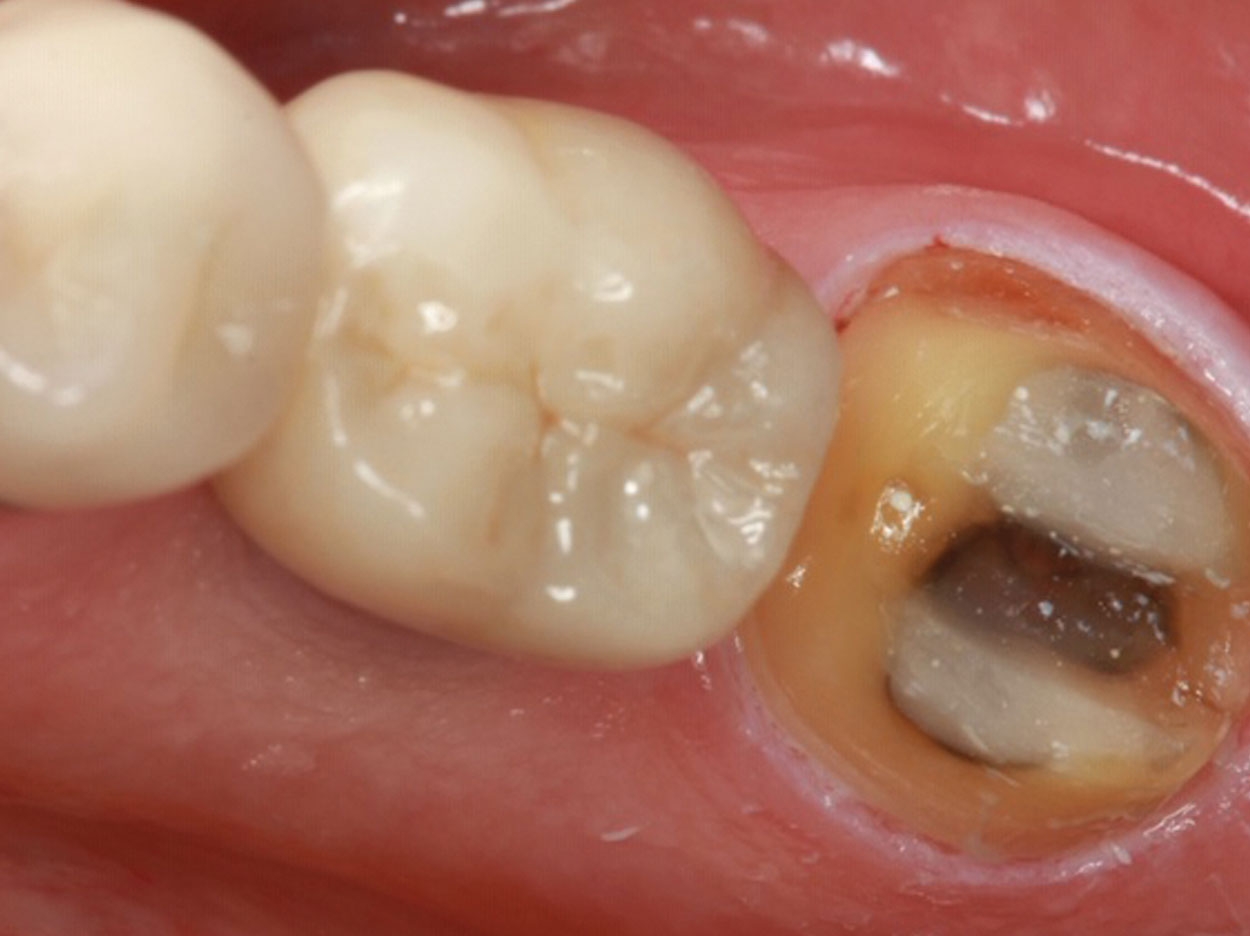
Materials technology has significantly advanced in many areas of contemporary restorative practice. This includes the cementation of indirect restorations, leading to improvements in the procedure and better results for our patients. Recently, Tokuyama Dental has developed 2 new resin-based products: Tokuyama Universal Bond, a self-cured adhesive, and EsteCem II, a dual-cure cement. Used together as a system, they offer unique features and superb performance.
Tokuyama Universal Bond (Figure 1) is activated by mixing one drop of Bond A with one drop of Bond B. The Borate catalyst creates a self-cure, and the HEMA eliminates the need for agitation. One can simply evaporate the solvents with a mild air stream followed by a moderate air stream. It has been our experience that one application of Tokuyama Universal Bond always results in a visual indication of curing from an initial light blue color upon mixing to a clear and shiny tooth surface upon polymerization completion, giving us the confidence that we have a good application of the adhesive.
Tokuyama Universal Bond is made with specific components that are designed to bond to all substrates without the need for additional primers or activators. That includes resin composite; zirconia; precious metals; glass ceramics; and, of course, tooth structure. The 2-component system utilizes water and acetone for superior wettability. The 2-bottle system allows for the separation of the acidic monomer, which prevents deterioration of the silane agent that may occur in one-bottle universal adhesives. This will provide consistent adhesion to zirconia, ceramics, and precious metals.
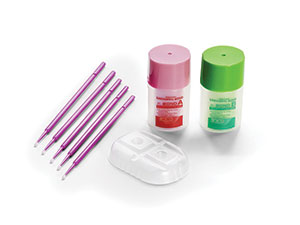 |
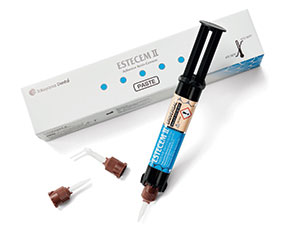 |
| Figure 1. Tokuyama Universal Bond (Tokuyama Dental America). | Figure 2. Universal shade of ESTECEM II adhesive resin cement (Tokuyama Dental America). |
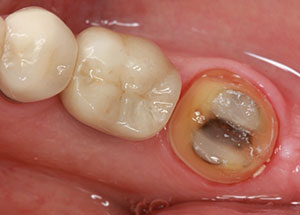 |
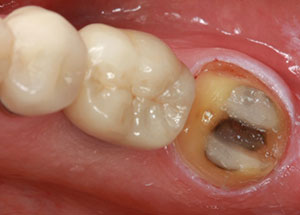 |
| Figure 3. Preparation of tooth No. 18. | Figure 4. Tooth No. 18 after the application of Tokuyama Universal Bond. |
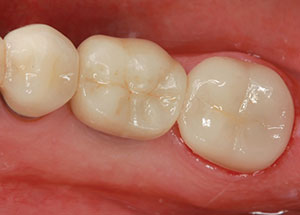 |
| Figure 5. Bonded IPS e.max Porcelain crown (Ivoclar Vivadent) on tooth No. 18. |
EsteCem II (Universal shade) (Figure 2) is a dual-cured hydrophobic resin cement that is packaged in an automixing syringe. It has superb bond strengths in all etching modes; is radiopaque; possesses superior durability in the oral environment; and, when combined with Tokuyama Universal Bond, is color stable.
The following case illustrates the simplicity of use these 2 products demonstrate when paired. The patient presented with an existing metal ceramic crown on tooth No. 18 with significant recurrent decay. We sectioned and removed the crown. Next, we removed the decay, restored the defects with Estelite Bulk Fill Flow A2 (Tokuyama Dental America) and a limited amount of Estelite Omega composite EA2 (Tokuyama Dental America). Then we completed a full-crown preparation for a full-contour IPS e.max porcelain crown (Ivoclar Vivadent) (Figure 3). The provisional crown was constructed with that Integrity Temporary C&B Material Temporization Procedure Kit (Dentsply Sirona Restorative) and cemented with Durelon Carboxylate Luting Cement (3M).
At the cementation appointment, the provisional crown and the Durelon cement were removed with an ultrasonic instrument. The IPS e.max crown was determined to fit accurately during a routine trial seating (CMR Dental Lab, Idaho Falls, Idaho). Our crown cementation protocol proceeds as follows:
- Scrub the tooth surface with consepsis scrub (Ultradent Products) as an assistant cleans the internal aspect of the crown with Ivoclean (Ivoclar Vivadent).
- Simultaneously rinse, dry, and isolate the tooth to a minimally dry state while the assistant rinses and dries the internal aspect of the crown.
- Also simultaneously, apply Tokuyama Universal Bond to the tooth surface (Figure 4) and evaporate the solvents with minimal (5 seconds) and moderate (5 seconds) air spray while the assistant applies it to the internal aspect of the crown and evaporates the solvent with moderate air spray.
- The assistant lines the crown with EsteCem II directly from the syringe and seat it to place.
- Next, the assistant does a tack cure (2 to 3 seconds) of the excess material and we remove it in the gel state.
- Final light cure is 20 seconds buccal and 20 seconds lingual margins.
- Remove any excess cement resin with the ultrasonic device.
- Adjust occlusion as needed and polish the restoration beginning with fine diamonds, then medium, and then fine Dialite LD Polishers (Brasseler USA). The completed restoration is visible in Figure 5.
For more information, call Tokuyama Dental America at (877) 378-3548 or visit the website tokuyama-us.com.
Dr. McDonald is in private practice in Plano, Texas. He is a visiting faculty member at the Pankey Institute and Spear Education. He has given educational presentations for dentists and dental assistants at national and regional dental meetings across the United States on clinical subjects as well as leadership and team building.



